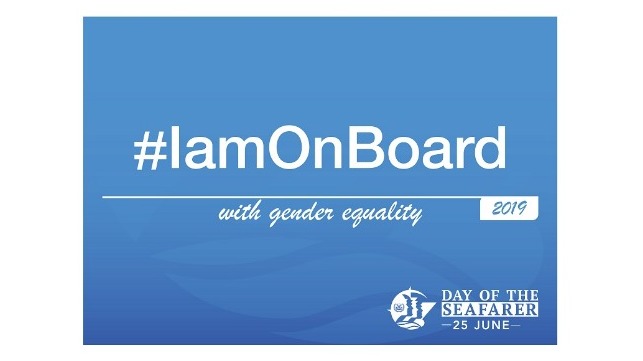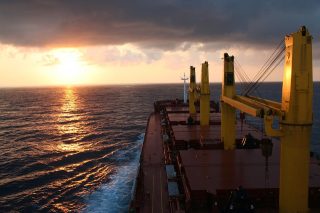
Maritime professions are considered dangerous occupations. Being a member of the crew on board of the ships increases the chance of physical injury and loss of health, argues Mrs. Elena Donina Glukhman, Project Manager, Development & Cooperation Worldwide at AP Companies Global Solutions. As a matter of fact, crew members have 1 in 11 chance to get injured while on duty. This probability is much higher than the majority of other occupations. This happens due to:
Exposure to stress, physical and psychological strain Current international regulation (Maritime Labour Convention (MLC 2006)), states that seafarers must receive equal quality of care as the population on shore. How can that be achieved, considering all the challenges of the occupation and environment? The specialized health insurers, assistance companies and Third Party Administrators (TPAs), employ hundreds of people to develop medical provider networks, negotiate rates with the hospitals, and it takes years and years to get these network built and working. Meanwhile, ship-owners are not specialized in this field and they have to find their own way to best service their crew members in the most crucial moments: when they need medical help. Of course ship owners cannot be blamed for not setting up and maintaining medical networks worldwide – this is not their specialty. Medical services are always an expense and not source of income, hence there should be a way to efficiently manage that expense. In addition to the fact, that health of the crew member needs to be carefully taken care of, it is important to consider that the medical problem in the crew, is a source of considerable expenses:
Transportation from the ship to the hospital, Besides these direct costs, there are other costs for which ship owner is not reimbursed or insured against. And to list some of them:
Production loss Therefore, the only way to save money and time and also make sure the quality of the services corresponds to the crew members´ expectation is to outsource these services and pass them to capable hands of a medical assistance company. Everything starts with PEME (Pre employment medical examination). The ship owners, face a number of challenges such as: the cost of obtaining certificate, time pressure and the pressure for ¨fit¨ certificate in case particular crew member possesses a unique and necessary set of experience and skills. This step is essential and the foundation of future wellbeing of the crew member on board. Therefore, the ship owner should pay close attention to the selection of the reliable provider for this task. Once crew member is on board, he starts to be exposed to numerous factors that may affect his health. Sometimes, the speed and the quality of the emergency medical care delivered in the port of call, can determine such important outcomes as:
The general outcome of the diagnosis and the future general state of health of the crew member A quick return to work is vital for the ship owners. Sickness-absence can also affect the chances of a seafarer retaining employment and can cause problems for the crewing of vessels. In most of the cases, local companies which provide access to medical care in the ports of call are not specialized in healthcare services sector. This means that the ship owner, will not get the best quality medical care, most likely over pay for the medical services, billing will not be transparent, and he may be also exposed to confidentiality issues (considering recent new GDPR legislation). What happens if the member while getting treatment in the port of call cannot return back to work right away and needs to be repatriated to home country for further treatment? A clear plan of getting crew member back home and brining to the fit for duty status, along with careful case management, selecting the best medical provider for the crew member’s condition, are absolutely essential. Considering that crew these days is very international, these tasks can be effectively managed only by truly global medical assistance specialist. Otherwise, the ship owner faces long sick leaves, non-effective and expensive treatments, endless paperwork and administration, and, most importantly, lack of satisfaction on the crew member side. “Like in any other field, the secret of getting the best result is very simple: everything becomes more efficient if done by a professional. In case of medical assistance – it should be performed by a company specialized in this particular activity which has solid global medical provider networks, in-house medical team and good knowledge of ship owner’s expectations. “says Natalya Butakova, Business Development Manager of AP Companies, the International crew medical assistance Company. Case study For the purpose of “putting theory into practice”, please allow us to bring to your attention a live example of the repatriation case our company managed in summer 2018. Please note, for confidentiality reasons all the personal details have been changed. 9.05 in the evening, our call center got a call from the Ship. One of the crew members, of polish nationality, had a medical emergency, later on the diagnosis was confirmed as bilateral pleural effusion. That happened when the ship was in Norway, a country with a very expensive medical care. AP Companies was notified about the case at the stage when crew member was already hospitalized in emergency to hospital in. Next day, we requested the hospital to confirm if the crew member was able to fly back home, where he would feel more comfortable, as the treatment was going to take time. According to the Fit to flight form, treating doctor confirmed that the member could fly on a commercial flight with an extra space, but he would need: medical escort, a constant oxygen supply during the flight, transportation to and from the airport in an ICU ambulance, and hospitalization upon arrival. We had 3 main repatriation objectives: direct flight, oxygen on board, ambulance access directly to the aircraft. And we needed to proceed with the evacuations as soon as possible, as the cost of hospitalization in Norway was extremely expensive. The main complication: constant oxygen supply on board of the aircraft. While our company has transportable oxygen, many airline companies do not allow external oxygen on board, so we were looking for an air carrier, that would have their own oxygen onboard and also perform direct flights. Finally, we arranged the flight with SAS airlines from Oslo to Gdansk (Poland). Within 24 hours we were able to get a confirmation of the oxygen onboard and provided:
Accompanying doctor for the whole mission Repatriation started in 36 hours from the moment we were notified about the case. Seafarer safely arrived to Poland and was admitted to the hospital. Later on we were managing this home country in Poland up until crew member was fit to go back onboard. As you can see from the above case, the situation was quite complicated and required a very specific professional knowledge. Our expertise in medical assistance, evacuations and repatriation saved a lot of time and also quite a considerable amount of money. If crew member would have stayed in Norway, he would be far from his family, his recovery would have taken much longer, and the cost of the hospitalization would have been extremely high, while with repatriation and all the correspondent costs included, the general saving was more than 55.000 Eur. With all this in mind, we suggest to take care of the crew wellbeing and effectively manage the medical costs by relying on professionals in medical assistance for the best quality of care for the most reasonable price.
SOURCE: https://safety4sea.com/
|













